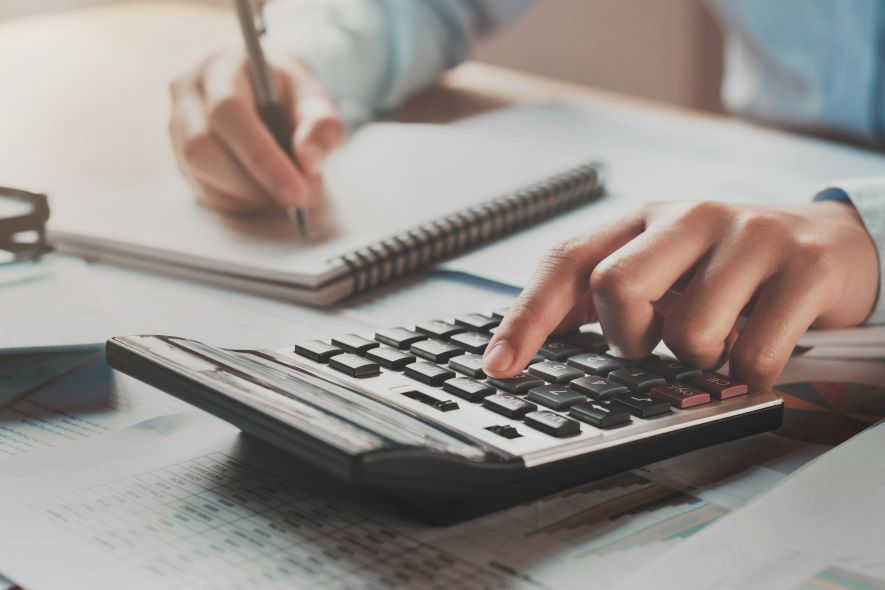It might seem counterintuitive, but many small business owners can gain a genuine appreciation for depreciation — especially when they’re calculating their company’s income taxes every year.
Depreciation Definition
Typically, when you think of depreciation, it’s in the form of a quantified decrease or reduction in something’s value over its useful life. For instance, when you buy a new car and drive it off the dealership’s parking lot, it instantly becomes a “used car,” and its value is said to have depreciated. In that example, depreciation might be seen as a bad thing. But this is not always the case — especially when it comes to business expenses.
When it comes to small business finances, depreciation can be a good thing, allowing for beneficial small business tax write-offs. In this form, depreciation makes it possible for business owners to reduce their taxes by deducting a portion of the cost – or all of the cost, depending on the type – of assets such as equipment, capital goods, and even real estate.

What Is Depreciation, How Is It Calculated, and What Qualifies to Be Depreciated?
Consider a couple who bought a condo in Florida for use as a rental income property. Tax law permits them to depreciate (or write off) some of the initial purchase cost of the asset – in this case, real estate – over time. This means that the couple can deduct the calculated amount of depreciation from their rental income and, as a result, reduce their taxable income from the property. If you consider that the market value of their condo may have appreciated during this same time, it’s easy to see how the investment has become a win-win for the couple’s overall balance sheet.
However, real estate isn’t the only asset that can be depreciated by savvy small business owners while calculating their income tax. Here are several more examples:
- Equipment: In a restaurant, for example, this can include walk-in freezers, dishwashers, cooking appliances, cookware, tables, chairs, etc.
- Machinery: This includes drill presses, hand tools, generators, air compressors, power tools, construction equipment and more.
- Intangibles: This category covers the value of patented ideas, computer software, even copyrighted materials you’ve developed or created.
- Buildings: If you use a structure to generate income, it can be depreciated (though the value of the land on which the building sits is not included in the depreciation calculation).
- Vehicles: Cars, trucks, vans, boats, aircraft and other types of transportation equipment can be depreciated as long as they’re used for business purposes.
It’s also important to note, that the Internal Revenue Service (IRS) allows you to fully deduct any “ordinary or necessary” costs related to your property that’s needed to continue your business. This includes repairs and maintenance as long as it’s routine. The IRS defines routine maintenance as something that keeps your property in normal and efficient operating condition. These costs can include:
- Painting exteriors or interiors of your business’s building
- Repairing broken windowpanes
- Replacing worn-out minor parts
- Sealing cracks and leaks
- Changing oil or other fluids on equipment
- Roof maintenance
To fully take advantage of this immediate deduction, you’ll need a written repairs and maintenance expense policy that you’ll need to follow consistently. This policy will define what repairs and maintenance expenses include compared to capital expenditures, which are long-term improvements. Capital expenditures happen when you incur a cost that makes an asset better like fixing a defect or expanding its use. For example, fixing a roof is a capital expenditure, but you can deduct it over a period of years as it depreciates.
Keep in mind that there are also some special “safe harbor” rules for small businesses (generally defined as companies with assets less than $10 million) where deductions of up to $5,000 for repairs and expenses can be automatically realized.
Why Is Calculating Depreciation Important and How Do You Do It Effectively?

Now that you have an idea of what depreciation can mean for your small business’s bottom line, you might be wondering how to best figure it into your own balance sheet or income tax calculations. Using a good accounting software program or tax preparation tool, or perhaps hiring a CPA firm, can help you simplify the depreciation process while taking full advantage of its benefits.
We’ve put together a complete guide to accounting principles and practices that you might find helpful when trying to maximize your depreciation savings and manage your cash flow while tracking business expenses. Needless to say, because there are various mechanisms and formulas for calculating depreciation, it’s probably wise to bone up on the basics.
What Are the Most Common Types of Depreciation?
Calculating depreciation all starts with cataloging your assets. To do that, you’ll need to keep records of the date you acquired each item, its original acquisition cost, and the type of asset you’ve purchased, because different rules can apply to various asset classes.

What Is the Formula for Depreciation?
To be clear, there isn’t a single formula for depreciating assets. Once you have assembled your information on an asset, however, you can put it into an accounting or tax preparation platform that can then guide you in determining the best depreciation method to use for each given asset. But let’s cover a quick description of the most common methods of depreciation.
Straight-Line Depreciation
The straight-line method divides the initial cost of a fixed asset by its years of useful life and applies the result as an annual deduction over the item’s expected lifetime. Other than the 100% “bonus depreciation” method described earlier, this is one of the simplest ways to depreciate an asset, making it a favorite of small business owners who want to handle their own business taxes or who have simple accounting systems.

What Is an Example of Straight-Line Depreciation and Its Formula?
Say your restaurant invests in a food dehydration system with a predicted useful life of 10 years. With the straight-line method, you’d take its depreciation amount in equal increments over the next decade. But how do you calculate straight-line depreciation?
Here’s a simple straight-line depreciation formula:
(Asset Cost – Salvage Value) / Useful Life in Years = Annual Depreciation
Putting numbers into the formula, you might get a depreciation rate that looks something like this:
Asset cost: $10,000
Salvage value: $1,000 (this is the value after depreciation)
Useful life: 10 years
$10,000 – $1,000 = $9,000 / 10 years = $900
$900 is the annual depreciation that you can deduct annually for each year of your asset’s useful life.
Declining-Balance Depreciation
With this method, you can front-load the deduction by weighing the first few years more heavily and then reducing the depreciation amount over time. This can be likened to the way mortgage loans are amortized. Over the earlier years of the loan, interest comprises a larger part of the monthly mortgage payment, while the amount of principal balance being paid off gradually increases each year. As an example, if you start with an asset with an initial cost of $200,000, you’d depreciate it by 10% in the first year, recording $20,000 in depreciation. Then you could take 10% of the remaining value ($180,000) in the second year for $18,000 in depreciation, and so on, until you’ve reached full depreciation for the given equipment.
Double-Declining Balance (DDB) Depreciation
The double-declining balance method is a hybrid approach that uses elements of straight line and declining-balance methods to arrive at a number that maximizes your depreciation deduction in the early years of owning an asset. It makes the most sense to use this approach for assets that quickly lose their value or have a short useful life. But there is one potential pitfall to bear in mind: While this method can be used for accounting purposes, it isn’t approved by the IRS for tax calculations.

Units of Production Method
This bases depreciation on how much the given asset is used, so it takes factors such as wear-and-tear into consideration as well as how much a specific piece of equipment is actually applied in production activities. This method requires very careful measurement of an asset’s output and could be challenging for many small businesses to track. It’s not an IRS-sanctioned method for tax write-offs.
As you can see, there are many ways to calculate depreciation depending on your circumstances, so it may be wise to consider hiring a knowledgeable CPA or using a good software program to help determine the best depreciation methodology for each of your small business’s assets.
Tips for Depreciation Accounting: What Types of Assets You Depreciate?
As noted above, there are numerous categories of depreciable assets, ranging from tangible objects to intangibles. The IRS has published a document that gives clear and concise information on the depreciation status of specific assets, as well as how to effectively depreciate specific asset classes and how to designate these assets’ useful lives. Of course, it may help to consult with your tax advisor to make sure you’re observing the latest available regulations. For more detailed information, you may also wish to review IRS Publication 946, which includes details on how to depreciate property.

Why Is Keeping Thorough Records Vital for Depreciation Calculations?
Needless to say, nothing can ruin your day (or your month) like an IRS audit, especially when you haven’t been judicious in record-keeping. That’s why a good filing system alongside trustworthy accounting programs can be a lifesaver. Throughout the duration of an asset’s useful life, always retain related transaction records. This information can also be fundamental to your company’s balance sheet, income statement and other accounting documents.
Use Your Resources
A good CPA firm, accounting system or tax software program will offer you choices between which depreciation method to use while also helping you keep track of your assets’ depreciation status. We hope the basics we’ve provided here can help you decide which one might work best for your tax situation. Finally, the IRS also provides asset depreciation tables you can use in the Appendix to Publication 946 (starting on page 69) as well as helpful tax tips through its Small Business Week portal.
For more details on depreciation, or to learn other ways to lower your income taxes, read our article on how small businesses can avoid overpaying on taxes.
Next Steps: Want to learn more? Sign up for the Small Biz Ahead newsletter to receive a weekly roundup of the latest tools, trends and resources.





